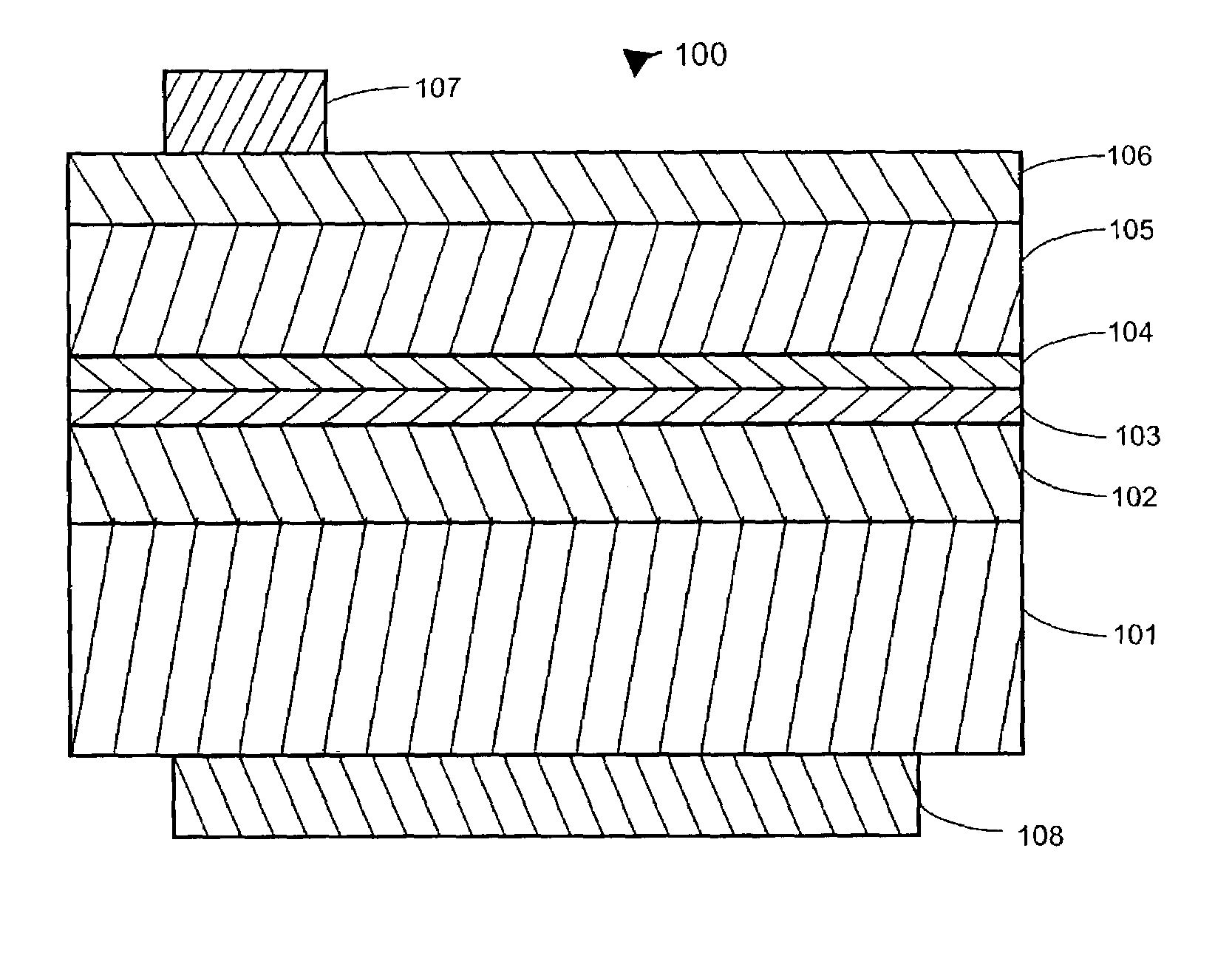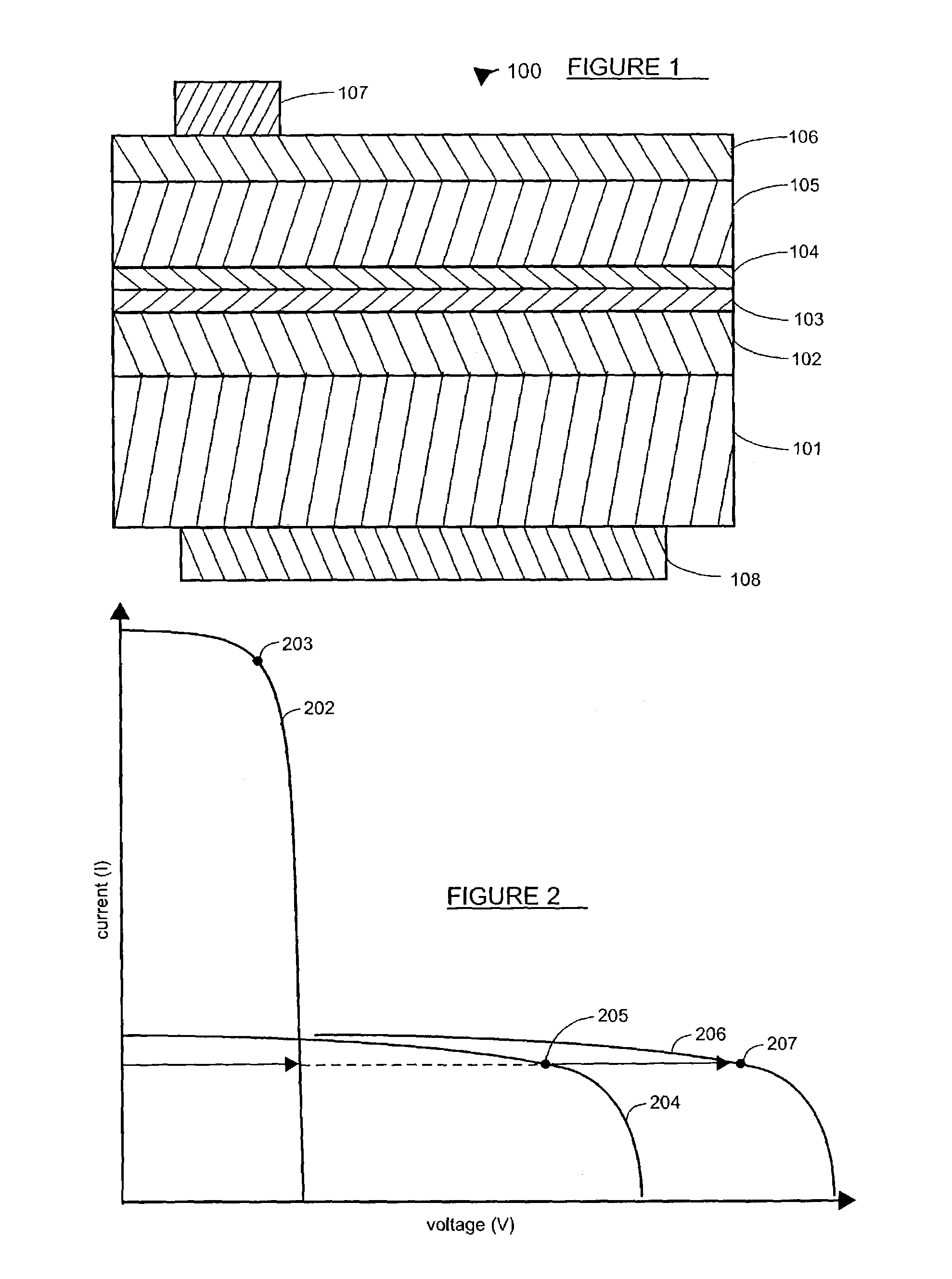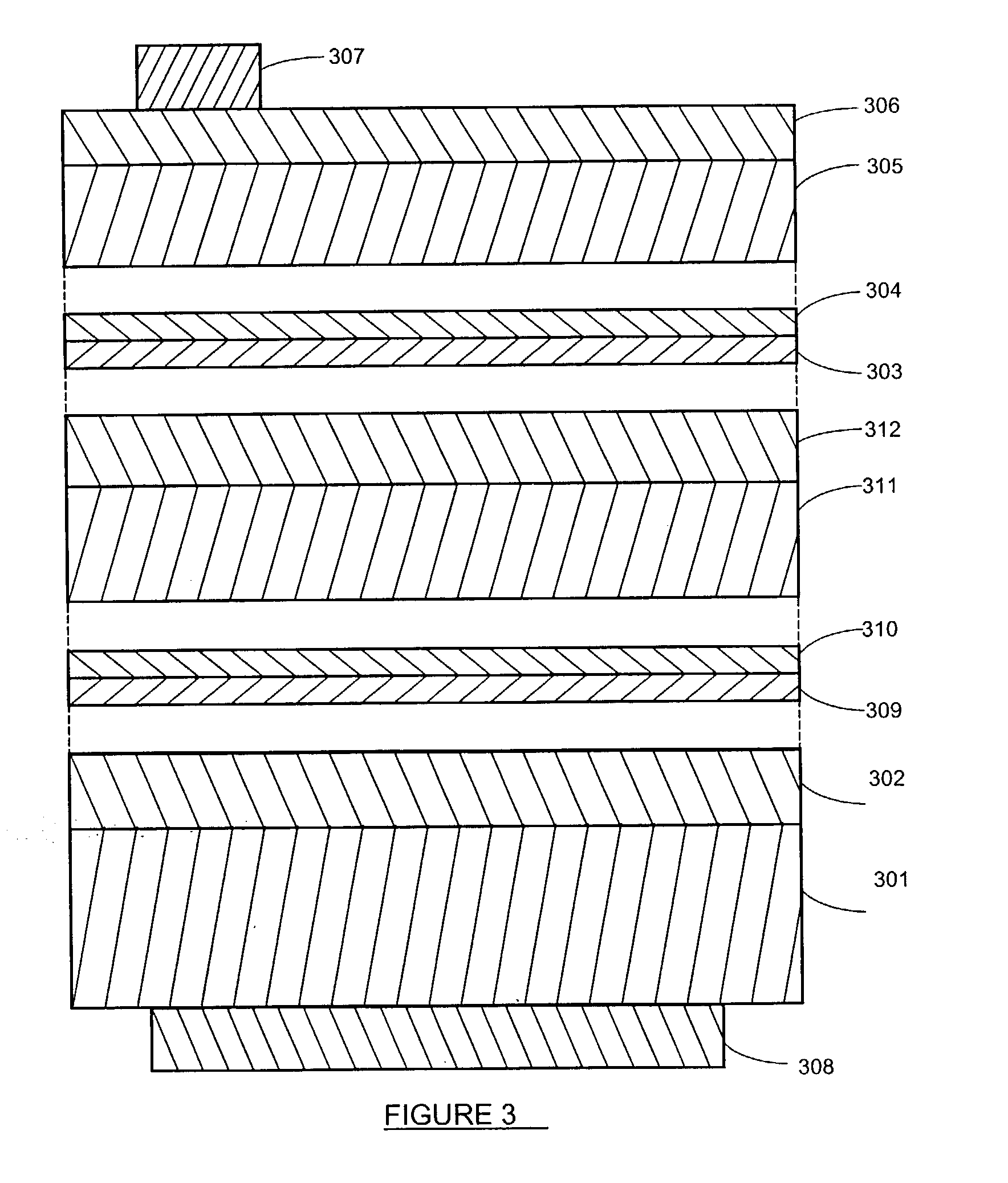GaP/silicon tandem solar cell with extended temperature range
a technology of tandem solar cells and silicon, applied in the field of photovoltaic (pv) cells, can solve the problems of low efficiency of high-temperature operation, low efficiency of high-temperature techniques, and insufficient silicon to capture all available light. achieve the effect of high operating temperature, good performance and low weigh
- Summary
- Abstract
- Description
- Claims
- Application Information
AI Technical Summary
Benefits of technology
Problems solved by technology
Method used
Image
Examples
example 1
[0070]In this example, the p-n junction is disposed close to the GaP.[0071]for the substrate layer 101, a thickness of 250 micrometers, doping level p-type, 1 times ten to the fifteenth (1×1015, or 1E15) boron atoms per cubic centimeter.[0072]for the overlying layer 102, a thickness of 0.1 micrometer, doping level n-type, 1E17 phosphorous atoms per cubic centimeter.[0073]for the tunnel junction layer 103, silicon, thickness 0.05 micrometer, doping level n-type, 1E20 phosphorous atoms per cubic centimeter.[0074]for the tunnel junction layer 104, silicon, thickness 0.05 micrometer, doping level p-type, 2E20 boron atoms per cubic centimeter.[0075]for the GaP layer 105, thickness 20 micrometers, doping level p-type, 1E15 zinc atoms per cubic centimeter.[0076]for the GaP layer 106, thickness 1 micrometer, doping level n-type, 1E18 sulfur atoms per cubic centimeter.[0077]for the top metal contact 107, gold-zinc alloy (98% gold, 2% zinc)[0078]for the back metal contact 108, aluminum, thick...
example 2
[0080]In this example, the p-n junction is disposed back from the GaP.[0081]for the substrate layer 101, a thickness of 10 micrometers, doping type p-type, doping 1 times ten to the seventeenth (1E17) boron atoms per cubic centimeter.[0082]for the overlying layer 102, thickness 250 micrometers, doping type n-type, doping 1E15 phosphorus atoms per cubic centimeter.[0083]for the tunnel junction n-layer 103, silicon, thickness 0.05 micrometer, doping 1E20 phosphorus atoms per cubic centimeter.[0084]for the tunnel junction p-layer 104, silicon, thickness 0.05 micrometer, doping 2E20 boron atoms per cubic centimeter.[0085]for the GaP p-layer 105, thickness 20 micrometer, doping p-type 1E15 zinc atoms per cubic centimeter.[0086]for the GaP n-layer 106, thickness 1 micrometer, doping n-type 1E18 sulfur atoms per cubic centimeter.[0087]for the front contact metal 107, composition gold-zinc alloy (98% gold / 2% zinc).[0088]for the rear contact metal 108, composition aluminum, thickness 30 micr...
PUM
 Login to View More
Login to View More Abstract
Description
Claims
Application Information
 Login to View More
Login to View More - R&D
- Intellectual Property
- Life Sciences
- Materials
- Tech Scout
- Unparalleled Data Quality
- Higher Quality Content
- 60% Fewer Hallucinations
Browse by: Latest US Patents, China's latest patents, Technical Efficacy Thesaurus, Application Domain, Technology Topic, Popular Technical Reports.
© 2025 PatSnap. All rights reserved.Legal|Privacy policy|Modern Slavery Act Transparency Statement|Sitemap|About US| Contact US: help@patsnap.com



